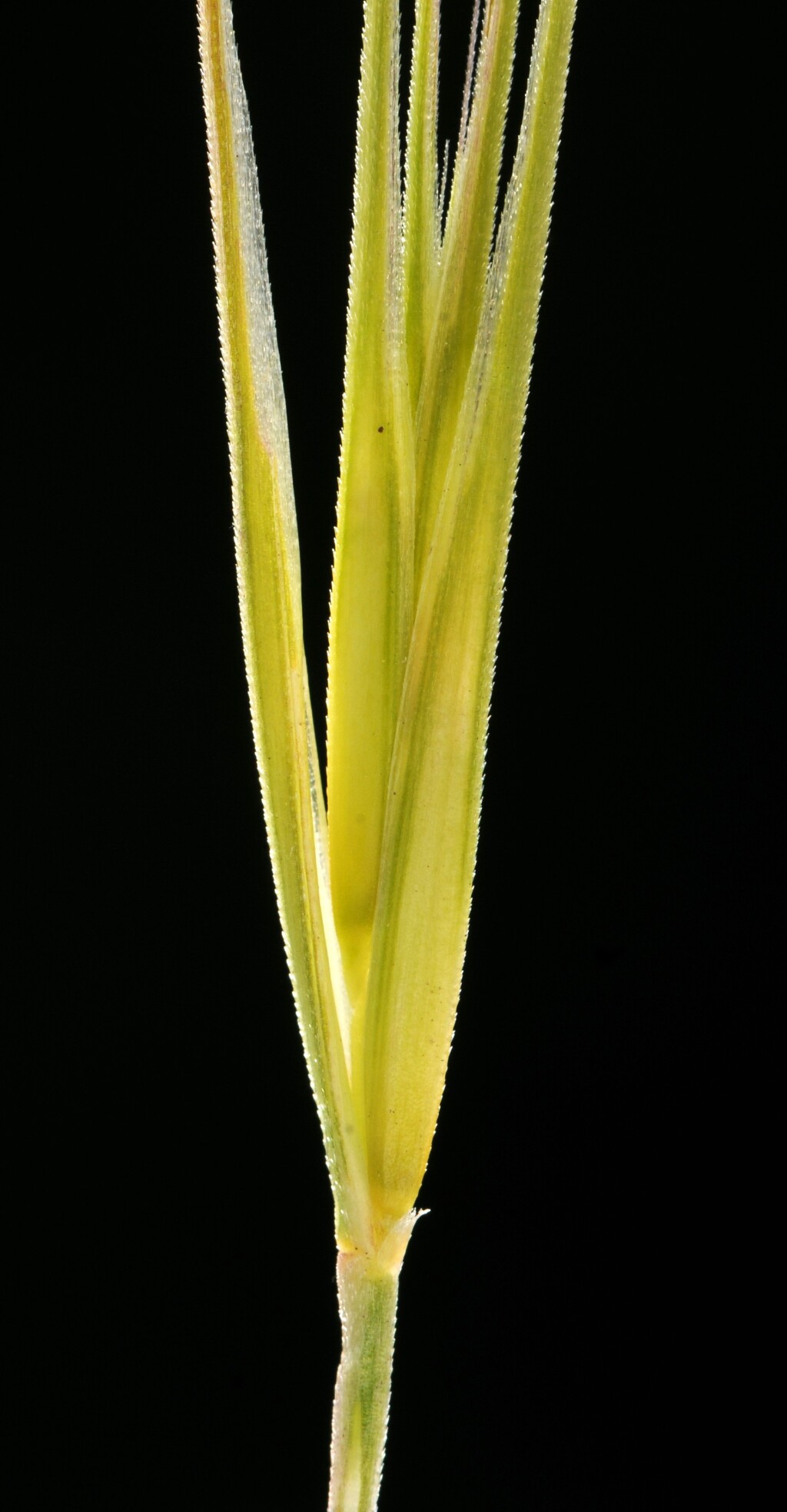Vulpia fasciculata
(Forssk.) Fritsch Sand FescueTufted annual, culms stiff, erect or ascending, to 50 cm high. Leaf-blades rather stiff, to 10 cm long and 3 mm wide. Inflorescence a one-sided raceme or panicle, stiffly erect and dense, 2–12 cm long, not or only shortly exserted from uppermost leaf-sheath; pedicels erect, thickened below spikelet. Spikelets 10–18 mm long (excluding awns), the lower 2–5 florets fertile and the upper 3–6 much smaller and sterile, often falling intact with the pedicel, but sometimes breaking up between florets; lower glume 0.1–2.5 mm long, upper glume 10–30 mm (including the 3–12 mm awn); body of fertile lemma 8–18 mm long, smooth, or scabrous along midnerve, awn up to twice as long as lemma body, callus elongate, 0.5–0.8 mm long. Flowers Sep.–Dec.
LoM, MuM, Wim, GleP, Brid, VVP, GipP, OtP, WaP, CVU, GGr, EGL, WPro, OtR. Also naturalised in WA, SA, NSW, Tas. Indigenous in coast and open sandy areas of southern and western Europe. In Victoria, known from sandy coasts from Portland to Mallacoota Inlet, and a few isolated areas in the north-west (e.g. Hopetoun, Lake Hindmarsh).
Walsh, N.G. (1994). Poaceae. In: Walsh, N.G.; Entwisle, T.J., Flora of Victoria Vol. 2, Ferns and Allied Plants, Conifers and Monocotyledons, pp. 356–627. Inkata Press, Melbourne.
 Spinning
Spinning




